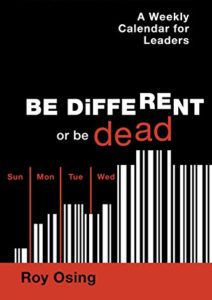In every organization there is a degree of conflict between marketing and sales.
Marketing complains that sales don’t move product effectively; sales claims they don’t get the support from marketing they need to do the job.
Marketing says that certain sales activity is off strategy; sales responds by criticizing that marketing doesn’t provide clear enough direction.
Around and around it goes.
A certain amount of this dance is healthy; too much and it’s dysfunctional, adversely impacting organizational performance.
These 6 actions will link marketing and sales in harmony.
- Clarify the roles of each party. Marketing sets strategy; sales executes it.
Sales is a channel to market; channel strategy is the responsibility of marketing.
Sales has no formal role in setting direction other than providing input as the frontline customer facing team.
It’s critical that all align with these roles otherwise nothing constructive gets done. Escalate to the highest levels in the organization to get resolution. - Ensure the marketing plan has sufficient granularity for sales to create their sales plan incorporating the strategy focus and priorities they must carry out.
This is often a major issue where the marketing plan lacks the clarity required to define the specific actions sales must take to execute successfully.
Without absolute clear translation for sales they will be forced to make their own interpretation of what marketing expects. This puts sales in a quasi-planning role for which they are not responsible and are ill equipped to play. - Engage sales in the quota setting process.
This does not mean they have a decision-making role in determining the overall sales target; total revenue is a marketing responsibility.
Sales however should play an active role in assigning revenue at the customer level. And deciding how any shortfall between the annual revenue objective and quota total – which generally occurs because quota setting is a bottoms up process and the revenue goal is tops down – will be allocated. - Implement an internal report card system where marketing and sales can rate each other in terms of how well each function is supported by the other.
Marketing defines their 6 critical needs of sales who, in turn, outline what they expect of marketing.
Every 6 months report cards are exchanged and completed; results are analyzed and actions taken by both sides to address where performance has fallen short of expectations. - Jointly review revenue results monthly. Joint action planning based on results against monthly revenue objectives will solidify and direct the relationship to enhance performance.
Name calling is reduced and energy directed to resolving issues rather than blaming the other side for any performance glitch. - Celebrate achievements together – good or bad. You either make it together or you fail together.
There is no finger pointing, only sharing. Remarkable teams are created by jointly owning performance results.
At the end of the day, aligning marketing and sales is not good enough.
They need to be one in order to provide the leadership every organization needs them to provide.
These 6 actions will work if you give them a try.
Pipeliner CRM greatly assists sales and marketing alignment. Get your free trial of Pipeliner CRM now.


















Comments